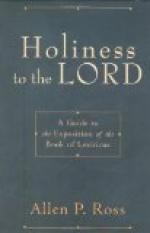The best linen rags are used for the highest grades of writing and bond papers, while ordinary note, letter, and flat papers are made from cotton rags. In some mills, such as the government mill at Dalton, Massachusetts, where the government paper is made for banknotes, and in others where the finest ledger papers are manufactured, none but new, clean rags are used. These come from the remnants left in the making of linen goods. In the government mill where is made the paper for our national currency, or “greenbacks,” there is a special attachment on the machine for introducing into the paper the silk threads that are always to be seen in our paper money. This attachment is just above the “wire” on the machine, and consists of a little conducting trough, through which flows, from a receptacle near the machine, a stream of water holding the silk threads in solution. The trough extends across the machine, and is provided at intervals with openings through which the short pieces of silk thread are automatically released, and sprinkled continuously onto the web of pulp as it passes beneath. The paper is thus distinguished, and infringement and possible counterfeiting are made extremely difficult by the fact that the government absolutely forbids the making of paper by others under a similar process, as well as the production of any paper containing these silk threads. The laws of the United States pertaining to anything that borders on infringement of our various money issues, both metal and currency, are most rigid; anything approaching a similarity of impression is prohibited, and a cut, stamp, or impression of any character that approaches in its appearance any money issue of our government is considered a violation of the law against counterfeiting, and is dealt with severely. The government takes the same uncompromising position in regard to the fabrics used in printing its paper-money issues, and it will be quickly seen that the silk thread process described above it is so great a variation from anything required in the mercantile world that it would be difficult to produce a paper at all similar without an ulterior purpose being at once apparent. For this reason the silk thread interspersion is in reality a very effective medium in preventing counterfeiting, not only on account of its peculiar appearance but also because of the elaborate methods necessary in its production.
In those mills making the finest grades of paper, much of the process of thrashing, beating, dusting, and cleaning necessary in the ordinary mill is omitted. The cleanliness and brightness which are reached only at the “washer” and “beater” engines in the process of manufacturing the lower grades of paper from cheaper rags, prevail at every step in these higher grade mills.
One of the first requisites in making good paper, especially the better grades, is an abundance of pure water, and spring-water, where available, is preferred.




